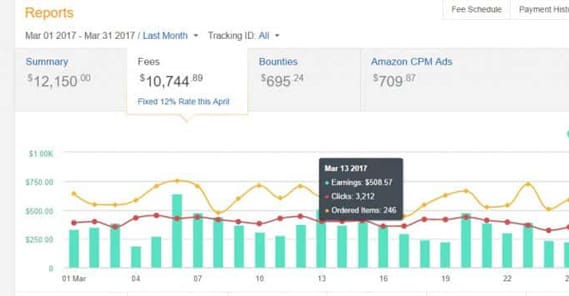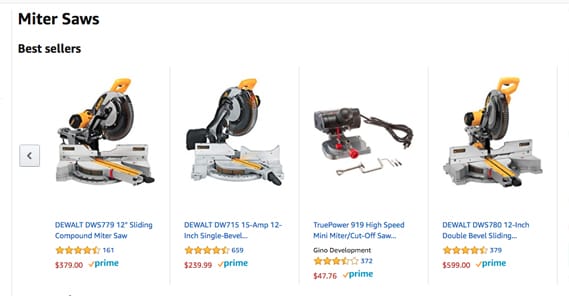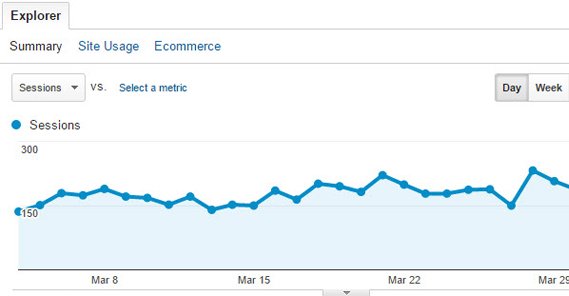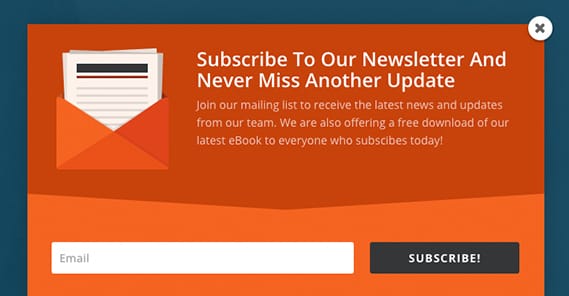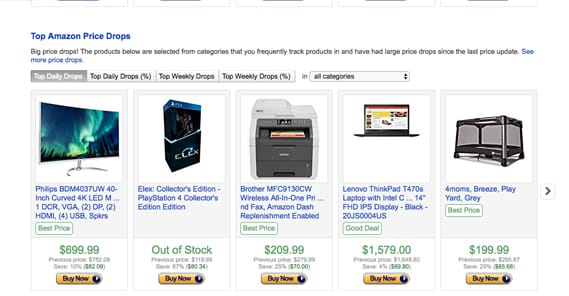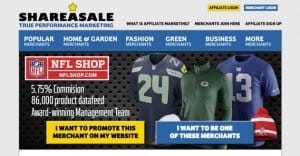20 Ways to Make Money with Amazon’s Affiliate Program
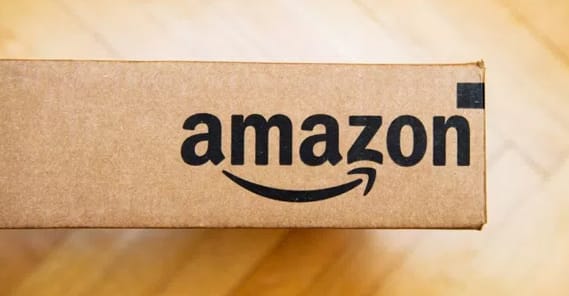
Amazon’s affiliate program is one of the best in the world for one simple reason: the cross-product tagging.
When I link you to Amazon with an affiliate tracking code, that code is stuck on your computer for 24 hours, or until you clear your cookies. If you make a purchase, the cookie is wiped, which means I only get the commission on the first purchase you make unless you go back and click my link again.
If you click my link and add the product to your cart, the cookie is extended to 90 days. This is an allowance for people who add products to cart to watch, but might want to research prices or reviews before actually making the purchase. This typically applies to high ticket items most frequently.
Anything the customer adds to their cart for one purchase within that 24-hour period is eligible for a commission. This is the true value of Amazon’s affiliate program. If I were to link you to a music CD I like that only costs $12, but you decide “hey, maybe I should get that plasma TV I was eyeballing, plus Christmas presents for my entire extended family,” I get a commission on everything you buy in that session.
Amazon is also very good at selling products. They have a massive library, so there’s something for pretty much everyone. They’re a trusted retailer, even if they have some sketchy workplace practices and policies. Their entire site is designed to convince you to buy something from them.
Of course, there’s always a downside to every upside. Amazon’s base commission rates are relatively low as far as affiliate networks are concerned. The performance-based structure can ramp up to some excellent commissions if you sell enough, but for smaller sellers it’s a low percentage. Even so, a low percentage of a huge purchase you didn’t expect the customer would make is still a sizable chunk of change.
So to maximize the amount of money you make from Amazon, you need to:
- Sell as many things as soon as possible each month to maximize your commission scaling.
- Sell big ticket items once your scaling commission has reached the peak.
- Emphasize people adding items to cart whenever possible, particularly for expensive items.
How, specifically, might you be able to do all this? The tips I’ve listed below may or may not work for your business, or they might give inspiration to go start your own affiliate site. Don’t worry if you can’t pull them all off at once, though.
1. Pick a Good Niche
Picking a good niche means picking one that you’re able to write about in a way that comes across as genuine.
You need actual opinions and actual recommendations to convince people to buy. Some people can fake it, others can’t. Your niche also needs a broad enough variety of products that you have plenty to cover on an ongoing basis. You can’t just dedicate an entire site to one particular faucet and expect to have content.
2. Make Sure A Link is in The Body Text
Content is what gets you ranked in search engines, not sales pages. Your goal is to write valid, valuable content about each individual product you want to sell. In that content – the body, not a subheading, not a sidebar, not a footer – you should have one affiliate link. You might be able to squeeze in a second link elsewhere in the content, generally to the same product, if your post is long enough.
3. Only Promote One Link Per Page
The key here is that you only really want to promote one affiliate product per page. If you add in more than one, you’re diluting the goal of the post. Each link you want to promote can be a different post on your site. If you want to link to product C from your post about product A, you can do it by linking to your article on product C. This gives the user more context and more opportunity for your passive sales techniques to kick in.
4. Get More Traffic
Everything comes down to traffic numbers in the end. If you have a 5% conversion rate, it’s better to have 10,000 visitors than to have 1,000.
You can get more traffic through social media promotion, through paid ads, through guest blogging, through blog comments, and a dozen other strategies. It’s technically even possible to promote an affiliate link directly, though I wouldn’t recommend it.
5. Use Plenty of Images
Humans are a very graphical type of creature in general. We love visuals. Using plenty of product images, in particular images that aren’t identical to the ones you see on Amazon. Amazon tends to have great images that match the Amazon site, but you want something a little more personal. The idea is to give the impression that you actually have and use the product, so your review of it is more genuine, so people trust you more and are more likely to convert when the time comes. As an added bonus, make the images themselves affiliate links.
6. Avoid Too Many Links
One problem you often see with advice about affiliate marketing is that marketers say you should add more links to your content, to the same product page. The idea is that each link along the way attracts users at different stages of the conversion process. Unfortunately, too many links on one page is liable to get you suspended from Amazon or get your site penalized by Google. Until you know what “too many” is, never feel like you have “not enough.”
7. Write Quality Reviews
When the average person is looking for a new product to buy, they’re going to check out reviews. A lot of times, they’ll already be on Amazon looking for reviews there, but sometimes they will seek out reviews on other sites.
You want to be one of those other sites. Your reviews should be lengthy, as unbiased as possible, and genuine. The more useful information and realistic facts you can convey, the more trustworthy your review is, and the more people will want to buy the product. This is a good guide on how to write a high converting review.
8. Choose a Good Domain
This tip only applies if you haven’t started up your site yet. If you’re looking to make a new affiliate site, start with your niche, then pick a good domain name. You want something relatively specific, but not so specific that it runs afoul of the exact match domain issues that plagued the internet for years. I’ve seen examples like SouthpawSports for sports equipment, or even something simple like CoolKidsToys. Always aim for a .com, and avoid anything that’s claimed by another brand already.
9. Buy a Logo
Affiliate sites are easy to set up, but it can be difficult to differentiate yourself from all of the other sites doing the same thing at the same time. One such way is to commission a logo for your business. Logos have a lot of power, both psychologically, and in branding terms. You look more professional and trustworthy when you have a brand, rather than the most basic WordPress template set up.
10. Use a Mailing List
You can create a mailing list and fill it with useful information for customers. A mailing list is a great source of traffic, but you do need to be in a niche where you’ll have repeat business.
To use the faucet example again, how often do people buy faucets? How often do they need tips and tricks in their email about it? Chances are your audience would be contractors and plumbers, so you need to cater the mailing list to the right kinds of people.
11. Learn Your Seasonality
You’ll want to learn about your niche and figure out when the best times are for sales. For example, a lot of technology goes on sale around the holidays, but also has sales surges in spring. DIY and home improvement items often surge in spring and have a more depressed holiday season, because they’re the last kinds of projects on anyone’s mind during December. When you know when the best times to sell are, you can push the most effective sellers then.
12. Run a Sales Cycle
The typical Amazon Affiliates sales cycle starts out each month with smaller items, the $1, the $5, the $20 items that people have less trouble buying on a whim. You want to sell as many of these as possible as quickly as possible during each month, so you push those sales early on. Once you’ve built up your commission, you can start focusing on the more expensive items to sell. You can frame this as selling big ticket items, then selling accessories, tools, and upsells. Really, most users won’t notice, and this helps passively with your promotion.
13. Track Sites Individually
This tip is specifically for people who want to operate in several disparate niches or run several different affiliate sites at the same time. You should strive to use different tracking codes for each site. This way, you can track conversions and revenue on an individual site basis, rather than just across your account. Do the same with Google analytics, as well. Amazon lets you make up to 100 tracking IDs to use for this express purpose.
14. Test CTA Styles
Amazon has shortlinks, long links, images, and text+image CTAs available. You can use any or all of them on your site.
Everything from a simple “buy now” button to a full embedded product image + price information can convert. You need to do some testing to see which of the options works the best for your niche and your audience.
15. Build a Grid
Once you’ve reviewed enough products in a similar category, you can create a single aggregate page. One of the best pages I’ve seen for this is on HardwareRevolution. Take a look at that page; it’s a great resource with parts that are researched to be compatible with one another for a certain budget range, with explanation and individual pages linked elsewhere. A grid can be a great resource for users and a source of conversions for you.
16. Monitor Sales and Deals
Sites like CamelCamelCamel and Slickdeals do a great job of monitoring prices and deals on Amazon and other storefronts.
You can take advantage of these resources to publish a weekly post that includes deals in your niche for anyone who is interested. You can even have users send in requests for products for you to monitor and notify them when there’s a sale that’s particularly useful.
17. Make a Top Sales List
Amazon has a general bestsellers page you can find here. Search that page for items in your niche and publish a post that talks about the best sellers in your area of expertise. You can link to reviews of products if you have them, use it to guide you in producing more reviews, and it can get people interested in a product they see everyone else buying.
18. Split Test Everything
There are a lot of different online platforms you can use to test variations in your landing pages and even variations in your review pages. You don’t want to test the difference between a positive and a negative review, but you can test different placements of your CTA, differences between the small and large buttons, and so forth.
19. Experiment with Media
YouTube can be a great source of an additional audience, and you can use affiliate links in your video description or external links. You can also try other media like infographics, though these are harder to add a valid link to. If you can produce a quality video review, do it.
20. Consider Tools
There are a lot of tools that can help you run an Amazon affiliate site. WordPress themes like Azon or the EasyAzon plugin for additional linking features are all useful, though not strictly necessary. Try them out if you want, but I’m not going to say they’re by any means required.
 ContentPowered.com
ContentPowered.com
